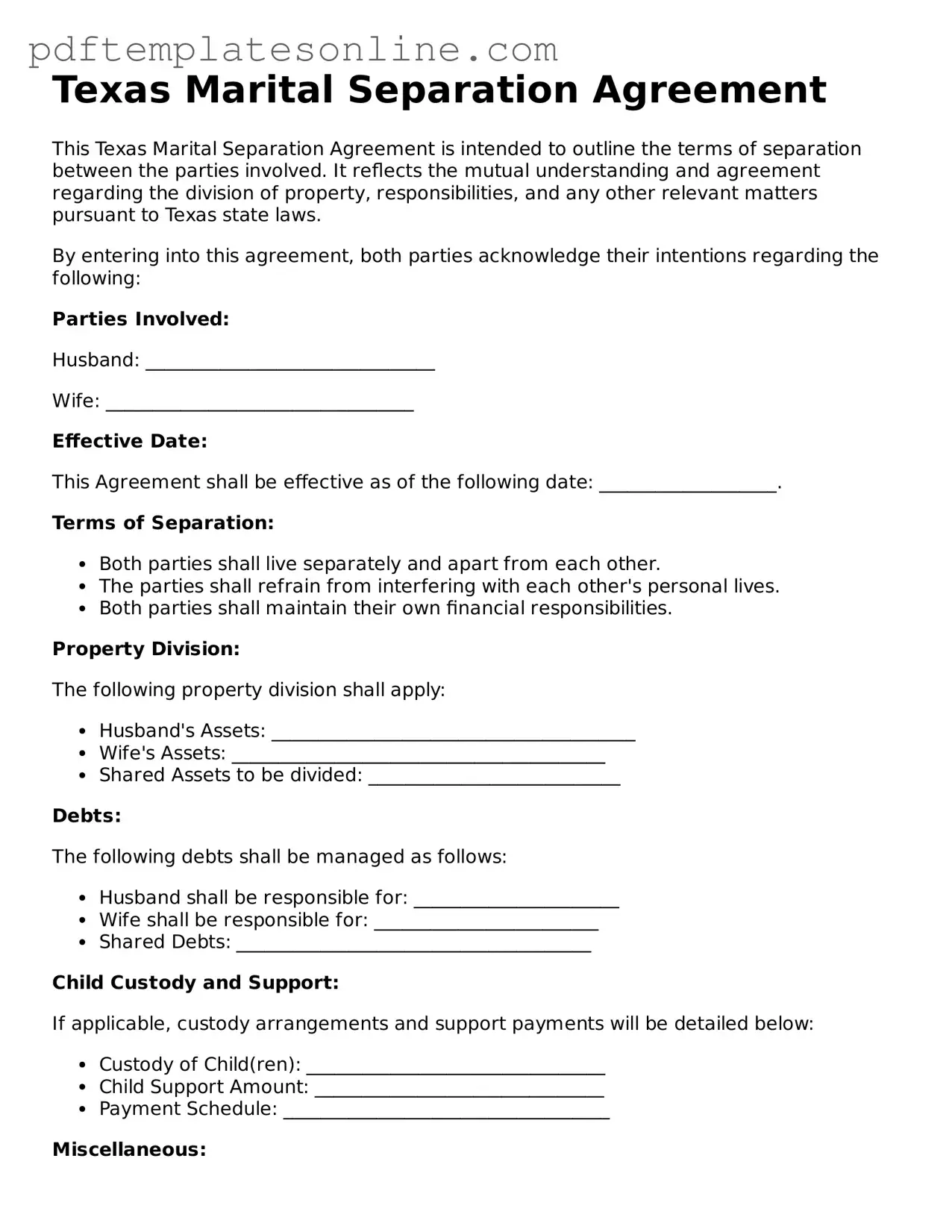Filling out a Texas Marital Separation Agreement can be a straightforward process, but many people make common mistakes that can lead to confusion or delays. One frequent error is not including all necessary personal information. It’s essential to provide full names, addresses, and other identifying details for both spouses. Omitting this information can cause complications later on.
Another common mistake is failing to clearly define the terms of separation. Vague language can lead to misunderstandings down the line. It’s important to be as specific as possible about how assets and debts will be divided. This clarity helps both parties understand their rights and responsibilities.
Many individuals overlook the need for both parties to sign the agreement. A signature is more than just a formality; it signifies that both spouses agree to the terms laid out in the document. Without signatures, the agreement may not hold up in court.
People often forget to consider future changes in their lives. For example, if one spouse plans to relocate or change jobs, it’s vital to address how these changes might impact the agreement. Ignoring potential future scenarios can lead to additional disputes later.
Another mistake is neglecting to review the agreement thoroughly before submission. This document is legally binding, so it’s crucial to ensure that all terms are accurate and reflect what both parties have agreed upon. Rushing through this step can result in errors that are difficult to correct.
Sometimes, individuals fail to consult with a legal professional. While it’s possible to fill out the form independently, having a knowledgeable person review it can provide peace of mind. They can catch mistakes that you might overlook and offer valuable insights.
Additionally, people may not consider the tax implications of their separation agreement. Certain decisions can have financial consequences that affect both parties. It’s wise to understand these implications before finalizing the document.
Another error is not keeping a copy of the signed agreement. Once the document is completed and signed, it’s important to keep a record for future reference. This can help prevent misunderstandings and provide clarity if disputes arise later.
Lastly, some individuals forget to update the agreement if circumstances change. Life is unpredictable, and changes in finances, living situations, or relationships can necessitate a revision of the agreement. Staying proactive about updates can help maintain fairness and clarity for both parties.
